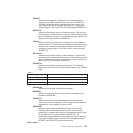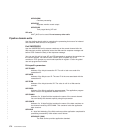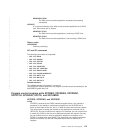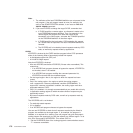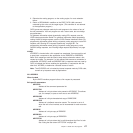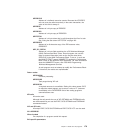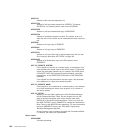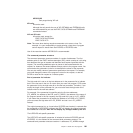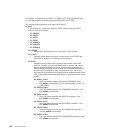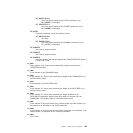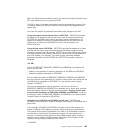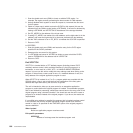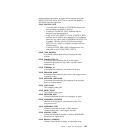UERCPURG
Task purged during XPI call.
XPI calls
All can be used.
Although the exit permits the use of XPI GETMAIN and FREEMAIN calls,
we recommend that you use the EXEC CICS GETMAIN and FREEMAIN
commands instead.
API and SPI calls
All can be used, except for:
EXEC CICS SHUTDOWN
EXEC CICS XCTL
Note: Take care when issuing recursive commands not to cause a loop. For
example, it is your responsibility to avoid entering a loop when a program
control request is issued from the XPCREQ or XPCREQC exits.
Use of the recursion counter UEPRECUR is recommended.
The command parameter structure:
The command parameter structure consists of a series of addresses. The first
address points to the EXEC interface descriptor (EID), which consists of a bit string
that describes the type of request and identifies each keyword specified with the
request. The remaining addresses point to pieces of data associated with the
request; for instance, the second address always points to the program name. You
can examine the parameters in the list to determine the values of the keywords.
You can also modify values of parameters specified on the request. For example,
you could change the name of the program involved in the request, or add the
SYSID to route the link request to a remote system.
End of parameter list indicator
The high-order bit is set on in the last address set in the parameter list to indicate
that it is the last one in the list. On return from your user exit program, CICS scans
the parameter list for the high-order bit to find the last parameter. Therefore, if you
modify the length of the parameter list, you must also reset the high-order bit to
indicate which is the new last address.
For example, if the parameter list specifies only the first two addresses
(PC_ADDR0, the address of the EID, and PC_ADDR1, the address of the name of
the program named in the link request), the high-order bit is set on in PC_ADDR1.
If you extend the parameter list by setting the address of a SYSID in PC_ADDR7,
you must unset the high-order bit in PC_ADDR1 and set it on in PC_ADDR7
instead.
The original parameter list, as it was before XPCREQ was invoked, is restored after
the completion of XPCREQC. It follows that EDF will display the original command
before and after execution: EDF will not display any changes made by the exit.
The UEPCLPS exit-specific parameter:
The UEPCLPS exit-specific parameter is included in both exit XPCREQ and exit
XPCREQC. It is the address of the command-level parameter structure. The
command-level parameter structure contains 11 addresses, PC_ADDR0 through
Chapter 1. Global user exit programs 181



